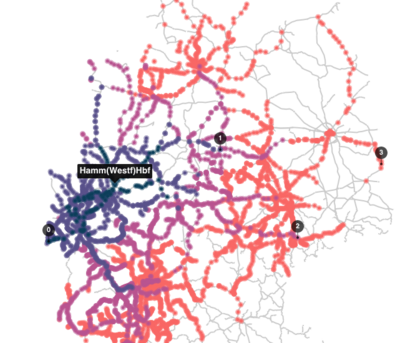Freelance Data Journalist and Reseacher

What do you see as the most important contribution of designers to data journalism projects?
One thing that makes data journalism as a field very interesting is how interdisciplinary it is. Which also means that people's individual inclinations, interests, ideas and ways of thinking are more decisive than their professional/educational background. I think some things that design and data journalism (ideally) have in common are the objective of translating relevant content to something tangible for users to engage with, and a certain playfulness with trying out new technology/materials, concepts, and aesthetics. But in my experience the roles are more fluid in many data journalism teams, so it's not necessarily (only) designers who bring these qualities to a project.
How can data journalism and information design help to make complex issues such as urban housing shortage or climate change relatable to the individual citizen?
I think it is often about disentangling large, complex topics into "bite-sized" portions and visualizing specific aspects of a large issue in an engaging way. I think of it as providing puzzle pieces to readers that they can use to make sense of complex issues on their own. A successful visualization can also function as something that grabs people's attention and allows for more abstract or complicated explanations and context after. Both data journalism and information design are often good at finding ways to boil down complex topics from the abstract into tangible stories, e.g. by drawing comparisons to familiar things or dimensions, translating national or global figures to the individual level, or using hypothetical scenarios, just to name a few approaches.
How should knowledge about infrastructures be communicated and what role can journalists, researchers or public officials play?
How I look at (ideal) journalism, it should provide the public with the information necessary for them to make political decisions that match their values and interests. I think infrastructure is part of our surroundings and reality that are shaped by (ideally, evidence-based) political decision-making, in which case I think there should be communication and debate about different ideas and their potential effects way before something is built (e.g. public transport, smart city concepts, etc.). Researchers have the resources and ability to test hypothesis and draw conclusions on possible effects using different methods, which journalists in general can draw from when trying to report relevant information to the public. Data journalists sit somewhere between traditional journalism and research, as they sometimes also produce new knowledge with scientific methods themselves. Public officials as well as data journalists can also play a role in providing tools (such as user interfaces, dashboards, ...) necessary to use, access or monitor public infrastructure. Public officials and administrative bodies are responsible for transparency and providing data that allows independent analysis and monitoring. In all of this, I think it is important for each actor to evaluate whom their communication is (not) reaching, and to adapt in order to include all parts of the population in the process.